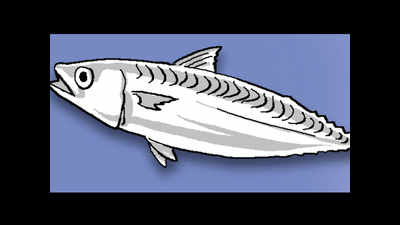- News
- City News
- patna News
- Biofloc fish farming a new trend in Bihar's Katihar
Trending
This story is from March 3, 2021
Biofloc fish farming a new trend in Bihar's Katihar
At least six biofloc-based fish farming projects have been undertaken in the district – three in Azamnagar and one each in Mansahi, Barari and Katihar. In biofloc system, circular or rectangular fish tank is constructed indoors and in a small space. The circular fish tank is made of tarpaulin and rectangular tank with the help of cement and mortar.

Representative image
By: Sanjeev Mishra
KATIHAR: At least six biofloc-based fish farming projects have been undertaken in the district – three in Azamnagar and one each in Mansahi, Barari and Katihar. In biofloc system, circular or rectangular fish tank is constructed indoors and in a small space. The circular fish tank is made of tarpaulin and rectangular tank with the help of cement and mortar.
District fisheries officer Shambhu Prasad Nayak said construction of ponds is going on in full swing at six places in the district.“Indigenous fish varieties like ‘tilapia’, ‘anabus’ and ‘tengra’ are being cultured in a small space. These fish varieties are produced for maximum harvesting and income,” he added.
Nayak said it takes around four months for these fish species to gain the maximum weight of 300-400 grams. “In the 15,000-litre capacity tank, the fish production can go up to 800kg to one tonne,” Nayak added.
Officials said production of these indigenous fish varieties is fast catching up in the district because of their high demand. These fish species can be cultured fast and sold at Rs 300-400 per kg.
“Tank and shed for fish culture is ready. In the second phase, seed stocking will be done. This scheme is a part of the ‘Jal Jivan Hariyali Mission’ of the state government. Several people have shown interest in this new technique of fish farming. The district produces 41 thousand metric tonne (TMT) of fish annually,” Nayak added.
KATIHAR: At least six biofloc-based fish farming projects have been undertaken in the district – three in Azamnagar and one each in Mansahi, Barari and Katihar. In biofloc system, circular or rectangular fish tank is constructed indoors and in a small space. The circular fish tank is made of tarpaulin and rectangular tank with the help of cement and mortar.
District fisheries officer Shambhu Prasad Nayak said construction of ponds is going on in full swing at six places in the district.“Indigenous fish varieties like ‘tilapia’, ‘anabus’ and ‘tengra’ are being cultured in a small space. These fish varieties are produced for maximum harvesting and income,” he added.
Nayak said it takes around four months for these fish species to gain the maximum weight of 300-400 grams. “In the 15,000-litre capacity tank, the fish production can go up to 800kg to one tonne,” Nayak added.
Biofloc technique is an intensive fish culture, in which water, aeration, medicines, feed and other aspects are monitored scientifically.
Officials said production of these indigenous fish varieties is fast catching up in the district because of their high demand. These fish species can be cultured fast and sold at Rs 300-400 per kg.
“Tank and shed for fish culture is ready. In the second phase, seed stocking will be done. This scheme is a part of the ‘Jal Jivan Hariyali Mission’ of the state government. Several people have shown interest in this new technique of fish farming. The district produces 41 thousand metric tonne (TMT) of fish annually,” Nayak added.
End of Article
FOLLOW US ON SOCIAL MEDIA










